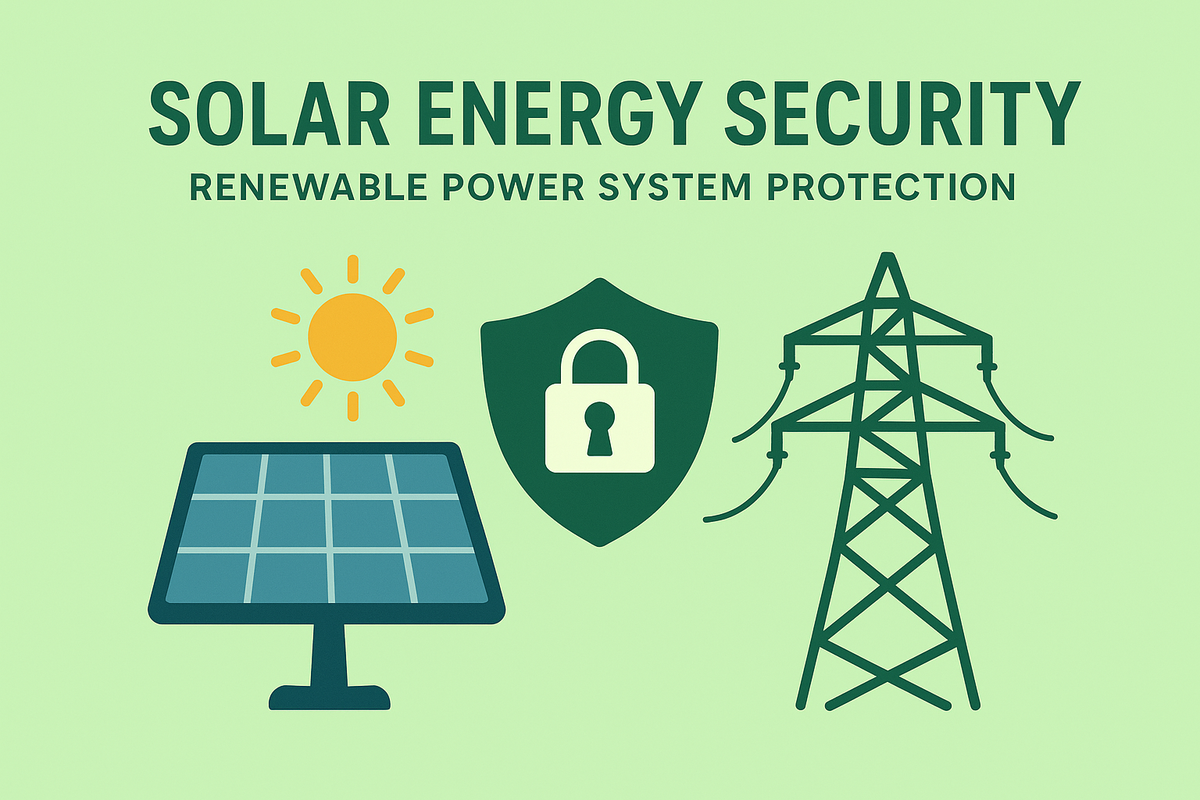Solar Energy Security: Renewable Power System Protection

Introduction: Solar Energy’s Critical Rise and Security Impact
The global expansion of solar energy has positioned it as a backbone of sustainable power grids, but rising deployment also brings new cybersecurity and operational risks. Interconnected distributed energy resources and cloud-enabled solar management create fresh exposures that demand urgent attention and robust safeguards.
Threat Landscape for Solar Power Systems
- Internet-exposed solar inverters and devices are increasingly targeted, with 46 new vulnerabilities documented in 2025, including risks of remote hijacking, firmware manipulation, and unauthorized plant control.
- Europe faces a concentration risk, with 76% of exposed solar assets located in just a few regions.
- Recent cyber incidents include targeted ransomware in US-based solar installations and botnet attacks using compromised inverter devices for large-scale grid disruption attempts.
- Solar hardware and platforms sourced from international vendors can be vulnerable to backdoors, supply chain compromise, and cross-border geopolitical risks.
Critical Vulnerabilities and Attack Vectors
- Common weaknesses include internet-facing management portals, insecure firmware updates, poor credential hygiene, and lack of segmented network architecture in solar operations.
- Risks extend to supporting infrastructure: battery energy storage systems (BESS), smart metering, manufacturers’ cloud portals, and mobile apps all present additional attack surface.
- Physical threats like arson, wildfire, hail, and targeted sabotage are compounded by digital vulnerabilities, intensifying the need for integrated risk management practices.
- AI and big data tools help monitor solar plant health but may misclassify as much as 20% of incidents if domain-specific training is lacking.
Operational and Environmental Challenges
- Inverter failures account for nearly 40% of downtime in solar PV systems, highlighting a need for rigorous maintenance protocols.
- Extreme weather impacts, climate change modeling, and geographic risk must be factored into site selection and asset protection strategies.
- Environmental regulations and biodiversity requirements increasingly intersect with security planning—new solar developments must balance operational risks with strict ecological standards.
- Fire suppression, voltage collapse, and underperformance (with annual rates as high as 8.6% in some regions) drive additional operational risk.
Regulatory Landscape and Security Standards
- International, national, and state-level regulations now require audits, standards compliance (NIST, ISO/IEC, IEC 62443), and ongoing reporting of vulnerabilities for solar operators.
- The US, EU, UK, and India continue to strengthen requirements around secure firmware management, secure supply chain, encryption in communications, and remote monitoring.
- Third-party risk is a focus area, with mandated assessments and contractually enforced cybersecurity controls for vendors and cloud service providers.
Case Studies and Recent Incidents
- Analysis of 2025 solar outages reveals both technical and cyber-driven causes: internet-exposed inverters, geographic concentrations of critical infrastructure, and supply chain compromise led to major disruptions in EU and US markets.
- Researchers have demonstrated the ease with which attackers can manipulate inverter settings, causing grid instability and data leakage.
- Cross-sector impact: coordinated attacks on solar systems can cascade into broader grid failure, with studies showing the need for real-time coordination and threat sharing between solar operators and national grid authorities.
Best Practices for Solar Energy Protection
- Network Segmentation and Device Hardening: Utilize microsegmentation, firewalling, continuous vulnerability scanning, and strong credential management for all solar plant assets.
- Secure Firmware and Software Updates: Deploy only signed and verified firmware; ensure role-based access to update interfaces and consolidate supply chain oversight.
- AI-Augmented SIEM Monitoring: Use next-generation, AI-augmented monitoring tools and SIEM integrations to detect and remediate both obvious and hidden incidents in real time.
- Collaborative Threat Intelligence: Establish automated incident sharing processes between grid, solar, wind, and battery operators for fast-moving threats.
- Physical and Environmental Resilience: Invest in fire suppression, anti-hail barriers, robust mounting technology, and periodic field-level audits to ensure comprehensive protection.
- Personnel Awareness and Training: Build ongoing security awareness programs for plant operators, contractors, and vendor partners; mandate safety, security, and compliance as part of operational culture.
Future Outlook: Scaling Secure Solar Energy
- The market for energy cybersecurity will exceed $2.6 billion by 2032, as defense investment keeps pace with expanding solar deployments.
- Distributed solar adoption—residential, community-scale, and industrial—will demand scalable, modular security controls and secure IoT integration.
- Cross-national collaboration and regulatory harmonization are vital, with information sharing and standards setting needed to close security gaps and prevent catastrophic sector-wide failure.
Conclusion: Powering a Secure, Sustainable Future
Securing solar energy systems requires a multi-layered mix of technical controls, operational best practices, regulatory compliance, and environmental stewardship. As both a climate solution and a critical infrastructure asset, solar’s resilience depends on anticipating threats and adapting rapidly to a dynamic risk landscape, where physical and cyber risks are deeply intertwined.
Take the Next Step with CodeSecure Solutions
Cyber threats are growing more sophisticated every day. With a trusted partner by your side, you can safeguard your business while focusing on what truly matters—growth and innovation.
At CodeSecure Solutions, we deliver comprehensive cybersecurity services in Chennai, uniquely tailored for startups, SMEs, and enterprises:
- Vulnerability Assessment & Penetration Testing (VAPT)
- Network Security Solutions
- Compliance Support (ISO 27001, PCI-DSS, HIPAA, DPDP Act, GDPR)
- Cloud & Endpoint Protection
- Security Awareness Training
No matter your industry or size, CodeSecure customizes solutions to fit your needs—ensuring your data, reputation, and operations remain secure.
Ready to Strengthen Your Defenses?
- 📞 Call: +91 73584 63582
- ✉️ Email: [email protected]
- 🌐 Visit: www.codesecure.in
Stay secure. Stay informed. Choose CodeSecure Solutions—your partner in cyber resilience
